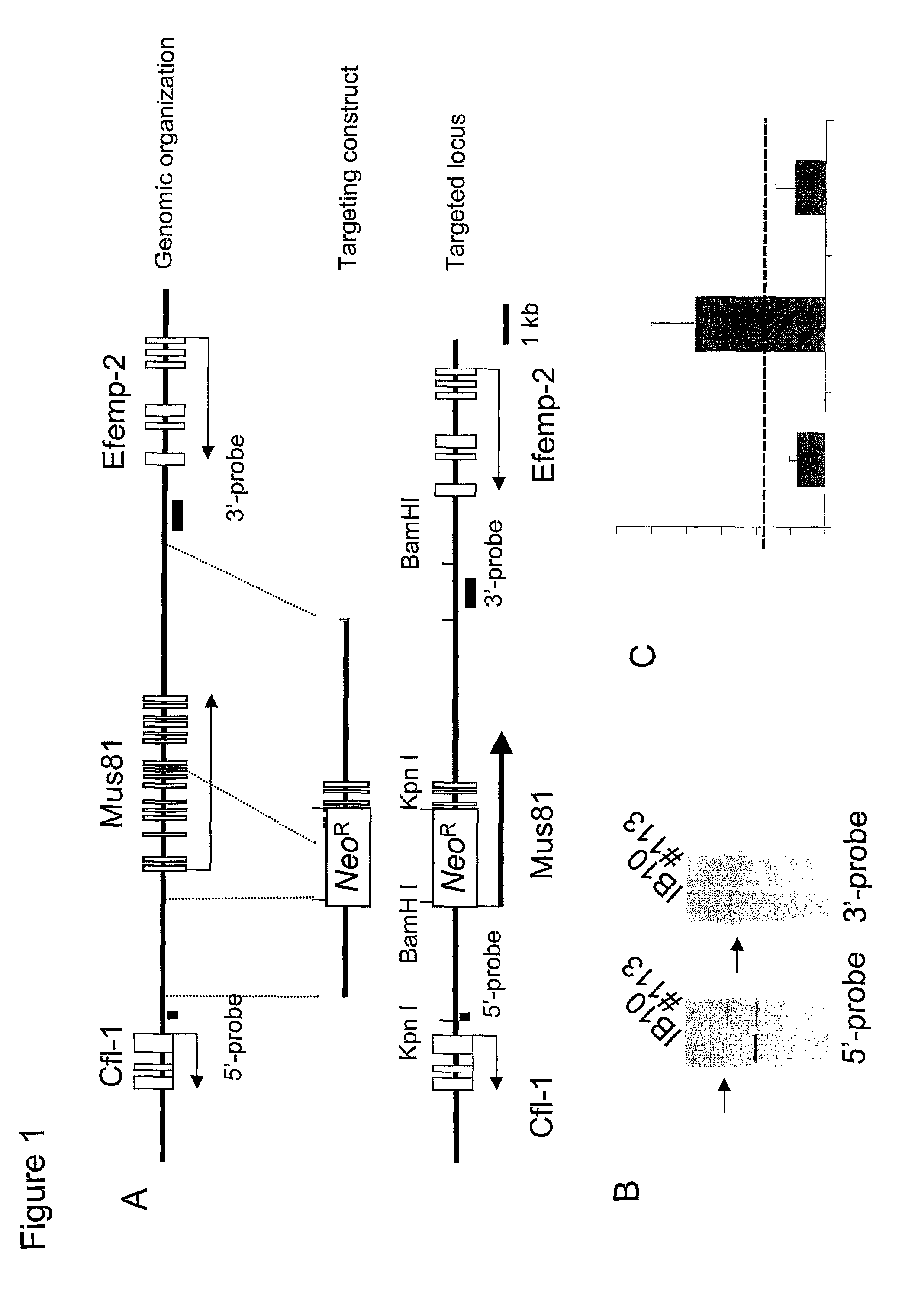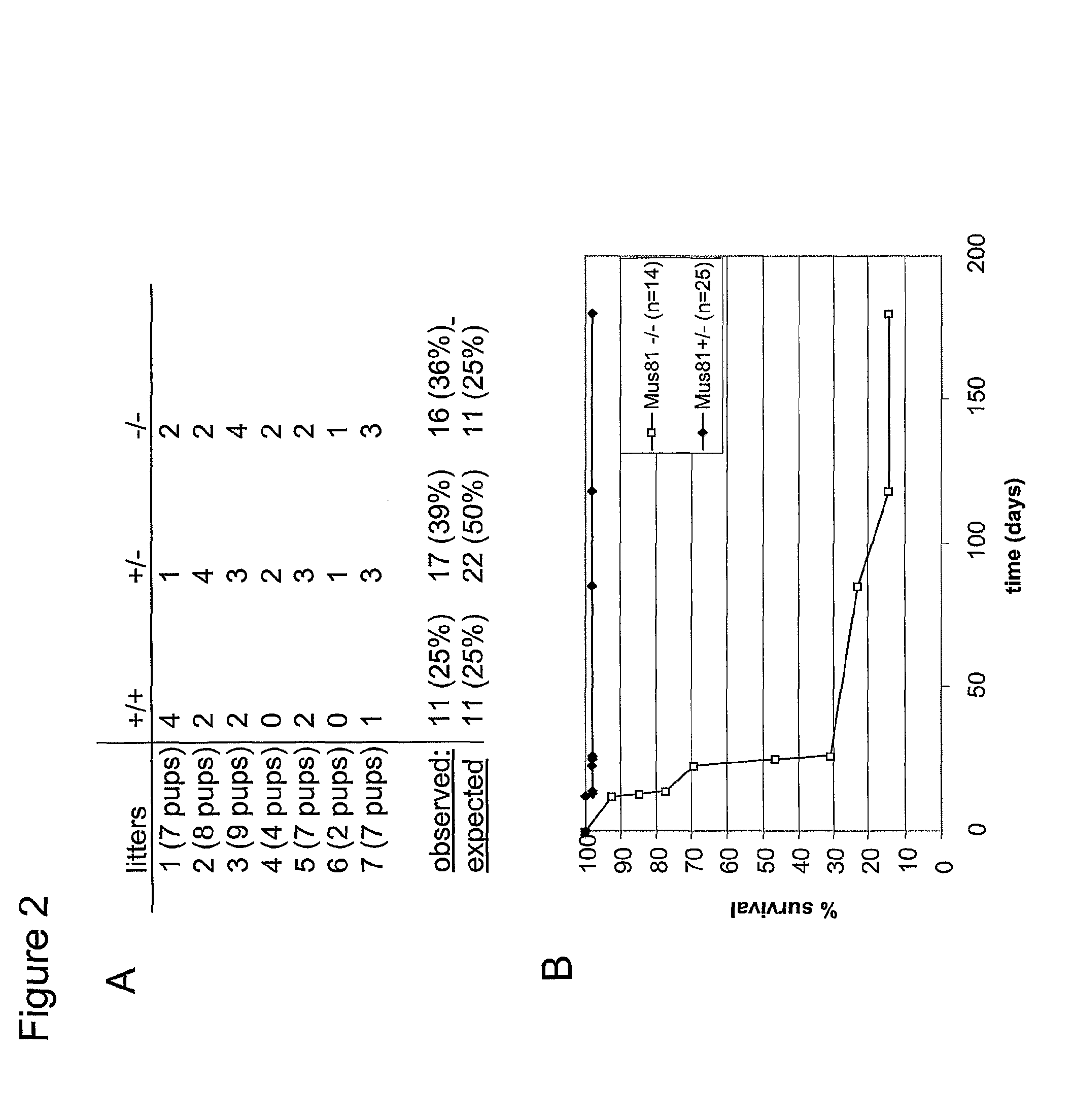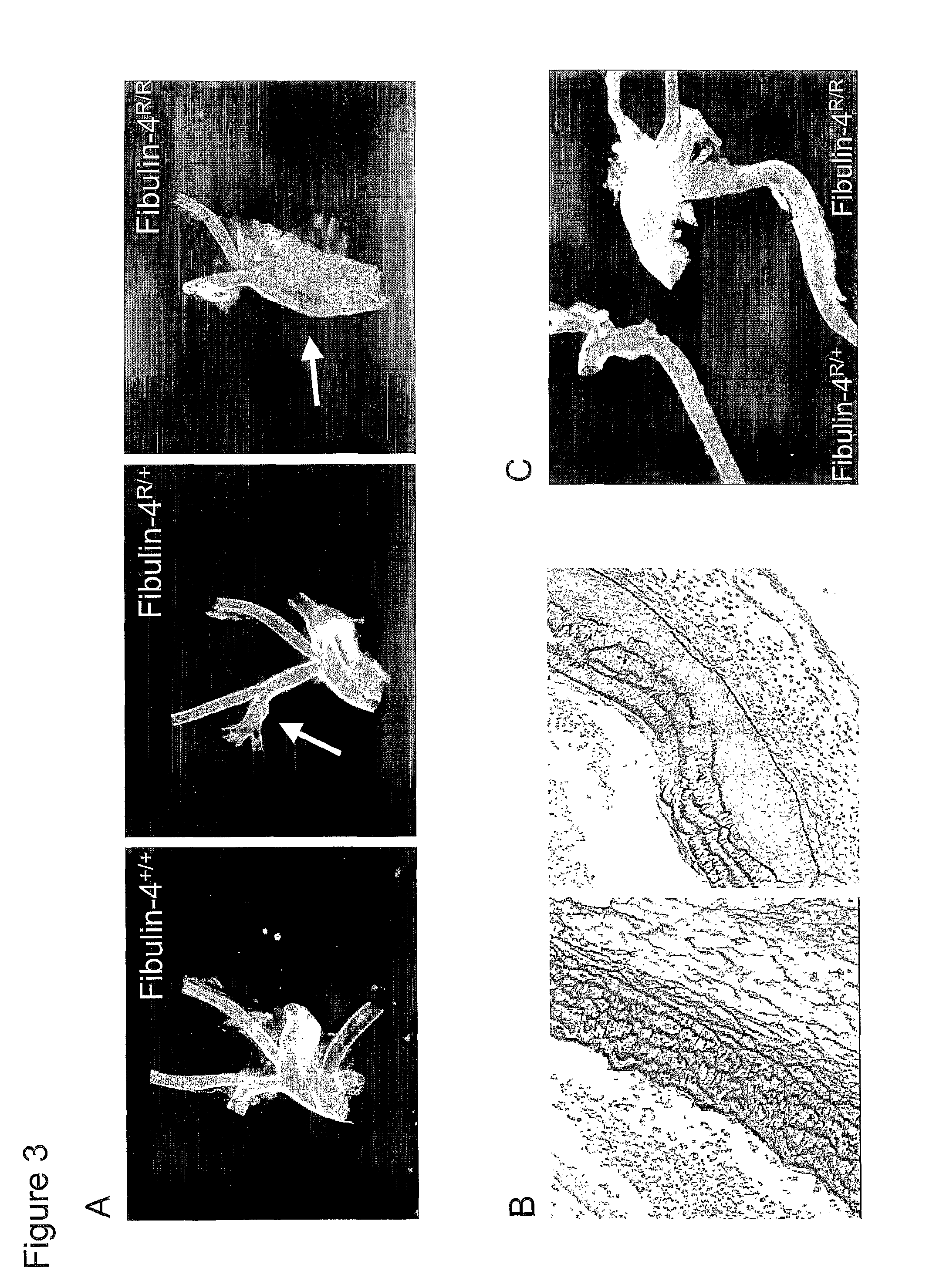Transgenic mouse comprising a disrupted Fibulin-4 gene as a model for cardiovascular disease
- Summary
- Abstract
- Description
- Claims
- Application Information
AI Technical Summary
Benefits of technology
Problems solved by technology
Method used
Image
Examples
Embodiment Construction
[0019]The goals of the present invention are met by the provision of a transgenic animal model with a decreased expression of the protein Fibulin-4. The present inventors generated mice with decreased Fibulin-4 expression through transcriptional interference by targeted integration of selectable marker. It was found that reduction of Fibulin-4 expression in mice results in heart defects, aortic insufficiency and aortic dissection. The invention therefore relates to a genetically-modified, non-human mammal, wherein the modification results in a disrupted Fibulin-4 gene. Such a mammal is advantageously used as an animal model for cardiovascular disease, in particular aortic aneurysms. A basic premise of animal models of disease is that they mimic the cellular and biochemical characteristics in the progression of the human disease. An animal model provided herein can provide information on the sequence of events that culminate in the initiation, maturation and eventual rupture of human...
PUM
 Login to View More
Login to View More Abstract
Description
Claims
Application Information
 Login to View More
Login to View More - R&D
- Intellectual Property
- Life Sciences
- Materials
- Tech Scout
- Unparalleled Data Quality
- Higher Quality Content
- 60% Fewer Hallucinations
Browse by: Latest US Patents, China's latest patents, Technical Efficacy Thesaurus, Application Domain, Technology Topic, Popular Technical Reports.
© 2025 PatSnap. All rights reserved.Legal|Privacy policy|Modern Slavery Act Transparency Statement|Sitemap|About US| Contact US: help@patsnap.com



